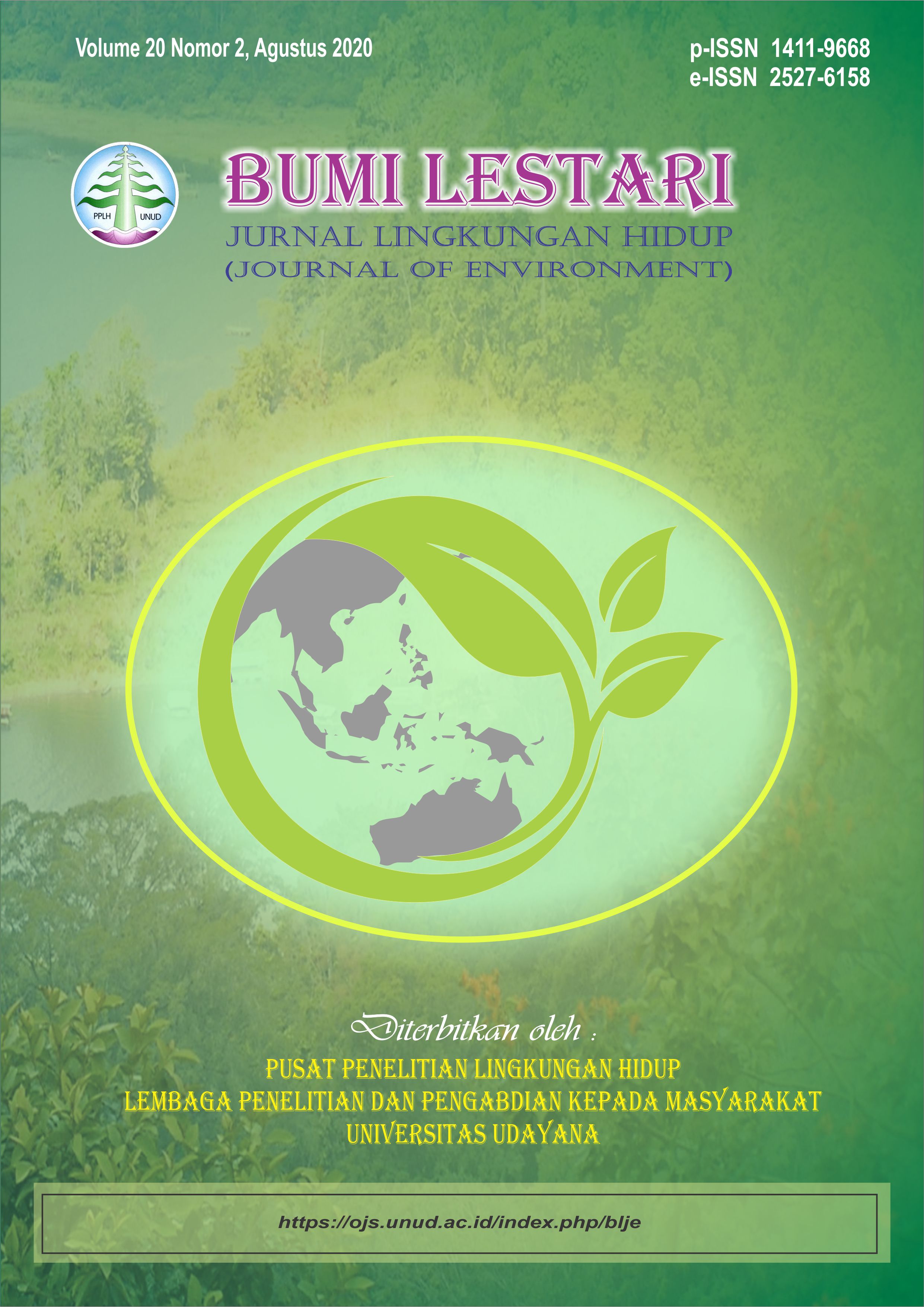KANDUNGAN LOGAM BERAT KADMIUM (CD) DAN TIMBAL (PB) PADA Enhalus acoroides DIPANTAI SEGARA AYU, PANTAI SEMAWANG, DAN PANTAI MERTASARI PROVINSI BALI
Abstract
Sanur Beach is one of the tourist destinations that is often visited by national or international tourists. The number of tourism activities can increase pollutants entering the waters, one of which is heavy metals. Heavy metal content in waters can come from various sources of activity, one of which is lead (Pb) and cadmium (Cd). Seagrass E. acoroides are found in the waters of Sanur Beach. Seagrass can absorb heavy metals because it interacts directly with the column to absorb metal ions in the water. The purpose of this study was to determine the value of bioconcentration and translocation factors for the heavy metal content of cadmium (Cd) and lead (Pb) in E. acoroides seagrass in the waters of Segara Ayu Beach, Semawang Beach, and Mertasari Beach and to determine their suitability with the quality standards of the Bali Governor Regulation. No. 16 of 2016, Permenkes RI. No. 32 of 2017 and SEPA of 2000. Sampling was carried out by purposive sampling method and the data obtained were analyzed using quantitative descriptive methods and methods. The highest bioconcentration factor in cadmium (Cd) leaves was at station II, namely 1.91 mg/kg, and the lowest was at station I with a value of 0.62 mg/kg. The highest bioconcentration factor in lead (Pb) leaves was at station II, namely,0.47 mg/kg and the lowest was at station I, namely 0.08 mg/kg. The highest bioconcentration factor in cadmium (Cd) roots was at station II, namely 1.23 mg/kg, and the lowest was at station III, namely 0.73 mg/kg. The highest bioconcentration factor in lead (Pb) root was at station II, namely 0.22 mg/kg and the lowest was at station III, namely 0.10 mg/kg. The highest translocation factor for cadmium (Cd) was at station II, namely 1.55 mg/kg, and the lowest at station I was 0.53 mg/kg, while for lead (Pb) the highest was found at station III, namely 2.45 mg/kg and the lowest was at station I which was 0.49 mg/kg. The content of cadmium (Cd) and lead (Pb) in seagrass does not meet the quality standards of the Bali Governor Regulation No. 16 of 2016, Permenkes RI. No 32 of 2017, but in sediments according to SEPA 2000.
Downloads
Authors who publish with this journal agree to the following terms:
- All articles published by Bumi Lestari Journal of Environment and Environmental Reseach Center Udayana University are made available under an open access license worldwide immediately. This means everyone has free and unlimited access to the full-text of all articles published in Bumi Lestari Journal of Environment, and everyone is free to re-use the published material given proper accreditation/citation of the original publication. Open access publication is supported by authors' institutes or research funding agency by payment of a comparatively article processing charge for accepted articles (See Author Fees). Bumi Lestari Journal of Environment and Environmental Reseach Center Udayana University publish articles under the Creative Commons Attribution License.
- Authors are able to enter into separate, additional contractual arrangements for the non-exclusive distribution of the journal's published version of the work (e.g., post it to an institutional repository or publish it in a book), with an acknowledgement of its initial publication in this journal.
- Authors are permitted and encouraged to post their work online (e.g., in institutional repositories or on their website) prior to and during the submission process, as it can lead to productive exchanges, as well as earlier and greater citation of published work (See The Effect of Open Access).





